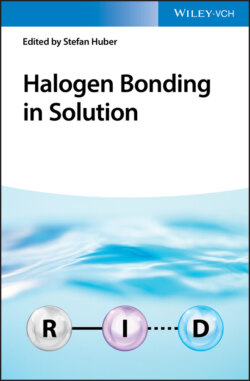Читать книгу Halogen Bonding in Solution - Группа авторов - Страница 37
1.5.3 Supramolecular Polymers 1.5.3.1 LC Polymers
ОглавлениеSupramolecular polymers are arrays of small molecules or linear polymeric chains held together by noncovalent interactions. LC polymers have many of the characteristics of other polymers, including mechanical strength at high temperatures, chemical resistance, and flame resistance, while maintaining LC order. The strength and directionality of the halogen bond make it an interesting noncovalent interaction to be used in polymer science. Yet, there are very limited examples, as detailed by a review in 2012 [181]. Xu et al. created the first LC polymer mediated by halogen bonds using bis(iodotetrafluorophenoxy) alkane donors, which formed halogen bonds with nitrogen acceptors on various stilbazole derivatives (Figure 1.19) [174]. The formation temperatures of the halogen bond LCs were narrower than hydrogen bond analogues utilizing carboxyl‐pyridine binding. The authors attribute the stabilization of the hydrogen bond derivatives to weak pyridine CH hydrogen bonds to the carbonyl oxygen. A second example comes from Cho et al. who developed an alternating hydrogen bond–halogen bond [182] system, which produced a mesophase at much broader temperatures than halogen bonding analogues. The examples above highlight how the halogen bond can influences LC polymer formation; however more studies are needed to understand the role of halogen bonding in their construction.
Figure 1.18 The first example of a photoactive halogen bonding LC developed by Priimagi et al.
Figure 1.19 The first example of a polymeric halogen bonding LC developed by Xu.
(Xu et al. [174].)
